|
|
|
 |

 |
 |
Peer review report - Stress tests performed on European nuclear power plants
European Nuclear Safety Regulators Group (ENSREG), 26 April 2012, 53 p.
The results of the peer reviews are summarised in this report. The purpose of this report – as prepared by the peer review Board is threefold: a) To describe the peer review process, b) To provide ENSREG with the outcome of the peer review process, c) To present the main results in terms of strong features, weak points, identified measures already taken at national level as well as indicating areas to be considered for possible further improvements.
|
Extraído de:
http://www.ensreg.eu/sites/default/files/EU%20Stress%20
Test%20Peer%20Review%20Final%20Report_0.pdf
|
 |
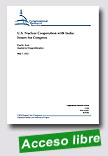 |
U.S. Nuclear Cooperation with India: Issues for Congress
Congressional Research Service (US), May 07, 2012, 49 p.
India, which has not signed the Nuclear Nonproliferation Treaty and does not have International Atomic Energy Agency safeguards on all of its nuclear material, exploded a “peaceful” nuclear device in 1974, convincing the world of the need for greater restrictions on nuclear trade. The United States created the Nuclear Suppliers Group (NSG) as a direct response to India’s test, halted nuclear exports to India a few years later, and worked to convince other states to do the same. India tested
|
nuclear weapons again in 1998. However, President Bush announced July 18, 2005, he would “work to achieve full civil nuclear energy cooperation with India” and would “also seek agreement from Congress to adjust U.S. laws and policies,” in the context of a broader partnership with India.
U.S. nuclear cooperation with other countries is governed by the Atomic Energy Act (AEA) of 1954 (P.L. 95-242). However, P.L. 109-401, which President Bush signed into law on December 18, 2006, allows the President to waive several provisions of the AEA. On September 10, 2008, President Bush submitted to Congress, in addition to other required documents, a written determination that P.L. 109-401’s requirements for U.S. nuclear cooperation with India to proceed had been met. President Bush signed P.L. 110-369, which approved the agreement, into law October 8, 2008. Then-Secretary of State Condoleezza Rice and India’s then-External Affairs Minister Shri Pranab Mukherjee signed the agreement two days later, and it entered into force December 6, 2008. Additionally, the United States and India signed a subsequent arrangement in July 2010 which governs “arrangements and procedures under which” India may reprocess U.S.- origin nuclear fuel in two new national reprocessing facilities, which New Delhi has not yet constructed.
The NSG, at the behest of the Bush Administration, agreed in September 2008 to exempt India from some of its export guidelines. That decision has effectively left decisions regarding nuclear commerce with India almost entirely up to individual governments. Since the NSG decision, India has concluded numerous nuclear cooperation agreements with foreign suppliers. However, U.S. companies have not yet started nuclear trade with India and may be reluctant to do so if New Delhi does not resolve concerns regarding its policies on liability for nuclear reactor operators and suppliers. Taking a step to resolve such concerns, India signed the Convention on Supplementary Compensation for Nuclear Damage, which has not yet entered into force, October 27, 2010. However, many observers have argued that Indian nuclear liability legislation adopted in August 2010 is inconsistent with the Convention.
The Obama Administration has continued with the Bush Administration’s policy regarding civil nuclear cooperation with India. According to a November 8, 2010, White House fact sheet, the United States “intends to support India’s full membership” in the NSG, as well as other multilateral export control regimes.
Extraído de:
http://www.fas.org/sgp/crs/nuke/RL33016.pdf
|
 |
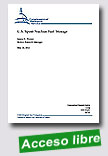 |
U.S. Spent Nuclear Fuel Storage
Congressional Research Service (US), May 3, 2012, 56 p.
Regardless of the outcome of the ongoing debate about the proposed Yucca Mountain geologic
waste repository in Nevada, the storage of spent nuclear fuel (SNF)—also referred to as “highlevel nuclear waste”—will continue to be needed and the issue will continue to be debated. The need for SNF storage, even after the first repository is opened, will continue for a few reasons. First, the Obama Administration terminated work on the only planned permanent geologic repository at Yucca Mountain, which was intended to
|
provide a destination for most of the stored SNF. Also, the Yucca Mountain project was not funded by Congress in FY2011 and FY2012, and not included in the Administration’s budget request for FY2013. Second, even if the planned repository had been completed, the quantity of SNF and other high-level waste in storage awaiting final disposal now exceeds the legal limit for the first repository under the Nuclear Waste Policy Act (NWPA). Third, the expected rate of shipment of SNF to the repository would require decades to remove existing SNF from interim storage. Accordingly, the U.S. Nuclear Regulatory Commission (NRC) and reactor operators are considering extended SNF storage lasting for more than 100 years.
The debate about SNF typically involves where and how it is stored, as well as what strategies and institutions should govern SNF storage. The earthquake and tsunami in Japan, and resulting damage to the Fukushima Dai-ichi nuclear power plant, caused some in Congress and NRC to consider the adequacy of protective measures at U.S. reactors. The NRC Near-Term Task Force on the disaster concluded it has “not identified any issues that undermine our confidence in the continued safety and emergency planning of U.S. plants.” Nonetheless, NRC has accepted a number of staff recommendations on near-term safety enhancement, including requirements affecting spent fuel storage and prevention and coping with station blackout. NRC is not requiring accelerated transfer of SNF from wet pools to dry casks, but the SNF storage data from the last several years indicate that accelerated transfer has already been occurring.
As of December 2011, more than 67,000 metric tons of SNF, in more than 174,000 assemblies, is stored at 77 sites (including 4 Department of Energy (DOE) facilities)in the United States located in 35 states (see Table 1 and Figure 5), and increases at a rate of roughly 2,000 metric tons per year. Approximately 80% of commercial SNF is stored east of the Mississippi River. At 9 commercial SNF storage sites there are no operating nuclear reactors (so-called “stranded” SNF), and at the 4 DOE sites reactor operations largely ceased in the 1980s, but DOE-owned and some commercial SNF continues to be stored at DOE facilities. In the United States, SNF is stored largely at nuclear reactor sites where it was generated. Of the 104 operating nuclear reactors in the United States, all necessarily have wet storage pools for storing SNF (wet pools are required to allow for a safe “cooling off” period of 1 to 5 years after discharge of SNF from a reactor). Wet storage pools are used for storage of approximately 73% (49,338 out of 67,450 metric tons of uranium, or MTU) of the current commercial SNF inventory, whereas the remaining 27% (18,112 MTU) of commercial SNF is stored in dry casks on concrete pads or in vaults. As wet storage pools become filled to capacity using “dense packing” storage methods, dry storage is increasingly being used, although there are 27 sites with 36 wet storage pools with no dry cask storage capabilities.
This report focuses on the current situation with spent nuclear fuel storage in the United States. It does not address all of the issues associated with permanent disposal of SNF, but rather focuses on the SNF storage situation, primarily at current and former reactor facilities for the potentially foreseeable future.
Extraído de:
http://www.fas.org/sgp/crs/misc/R42513.pdf |
 |
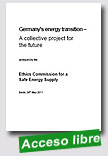 |
The range and complexity of the proposals on the process, measures and institutions for the energy transition make it clear that this is in fact a collective project.
The Ethics Commission views the gradual withdrawal from the use of nuclear energy as an exceptional challenge for everyone involved as well as being a source of new opportunities for getting citizens involved in decentralised decisions.
|
Extraído de:
http://www.bundesregierung.de/Content/DE/_
Anlagen/2011/05/2011-05-30-abschlussbericht-ethikkommission_en.pdf;jsessionid=
622EE5CF43F2856741A0CD8313C56E96.s2t2?__blob=publicationFile
|
 |
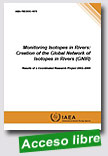 |
Monitoring Isotopes in Rivers: Creation of the Global Network of Isotopes in Rivers (GNIR)
IAEA TECDOC, 2012, 258 p.
This publication presents and evaluates several isotope datasets compiled in a number of recently established river monitoring stations founded at the time of the creation of the Global Network of Isotopes in Rivers (GNIR). It also contains the preliminary results from twelve field sites now included in GNIR. These studies illustrate the different hydrological aspects of river basins that can be addressed by regular monitoring of
|
environmental isotopes in rivers. The target readers for this publication are hydrologists, hydrogeologists and isotope experts dealing with catchment hydrology and management of water resources as well as technical cooperation project counterparts in Member States.
Extraído de:
http://www-pub.iaea.org/books/IAEABooks/8693/Monitoring-Isotopes-in-Rivers-Creation-of-the-Global-Network-of-Isotopes-in-Rivers-GNIR |
 |
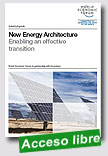 |
New Energy Architecture: Enabling an effective transition
World Economic Forum, Accenture, 2012, 52 p.
The way energy is produced, distributed and consumed around the world is currently undergoing fundamental change of almost unprecedented proportion. Many countries struggle to upgrade their energy systems to fully support current and future requirements of energy security and access, sustainability and economic growth.
This report, produced by the World Economic Forum in collaboration with Accenture, looks into pathways to creating a |
more effective transition towards a New Energy Architecture. It reveals how countries are progressing by applying the newly developed Energy Architecture Performance Index. In addition, two deep-dive country studies have been conducted on Japan and India.
Executive Summary | Case study: Japan | Case study: India | Full Report
Extraído de:
http://www.weforum.org/reports/new-energy-architecture-enabling-effective-transition
|
 |
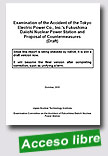
|
Examination of the Accident of the Tokyo Electric Power Co., Inc.'s Fukushima Daiichi Nuclear Power Station and Proposal of Countermeasures - Draft
Japan Nuclear Technology Institute, October 2011, 280 p.
The accident at the Fukushima Daiichi due to the major earthquake that took place on March 11, 2011, made us realize once again, how severe the consequences can be in case of accident in nuclear power plant, as well as it destroyed the trust in nuclear technology which has been built till now by the nuclear
|
power industry. It is very important that we seriously introspect why the nuclear power industry could not prevent such accident and ensure even more safety of nuclear power plants so that serious accidents can be prevented.
Hence, we conducted an investigation by starting a [Fukushima Daiichi nuclear power plant accident investigation committee] in Japan Nuclear Technology Institute, so as to summarize the necessary counter measures by gathering the lessons learned from Fukushima Daiichi accident and focusing all the efforts of the Japan nuclear power industry.
The investigation committee is formed of Japan Nuclear Technology Institute, Tokyo Electric Power corp. and manufacturer and has proposed various necessary countermeasures by drawing lessons from this disaster and keeping a focus on analysis of reasons; based on the information related to Plant design as well as the information accumulated from the operational experiences.
Presently, the accident related work is going on in Fukushima Daiichi, but, at the same time, it is also necessary to execute the countermeasures so as to ensure even more safety in the nuclear power plants which are functional within the country.
In case of this investigation, the scope of the investigation was considered from the earthquake attack followed by tsunami till the release of radioactive material and was based on all the information, related to the Fukushima Daiichi accident, published by Tokyo Electric Power Corporation. The main purpose of the investigation was to analyze the reasons and investigate the countermeasures with a view to ensure policies for prevention of accidents due to tsunami attacks, preventing the spread in case of such an accident, and reducing the effects of accidents.
Based on the facts related to the development of the accident the analysis of the main cause for widespread of the accident was analyzed according to the event tree and topics were picked up. Moreover, the reason why the safety system could not work, was organized in matrix format from the [stop],[cool] function screens ensuring safety and topics were picked up in such a way that no topic is missed. Based on all these topics, lessons were extracted and a variety of concrete examples of countermeasures is summarized.
Further, investigation in case of picking up new topics and design of countermeasures is continued by giving importance to the topics which should be initiated for the industrial world; it is also decided that in case of issues which need to be analyzed with the government or the self governing bodies such as Bousai etc., we will continue the investigations regarding how to deal with it as an enterprise. Hereafter, we will keep proposing additional countermeasures for improving safety after conducting investigation and revising this report; if new facts are identified and the important topics are picked up.
Extraído de:
http://www.gengikyo.jp/english/shokai/Tohoku_Jishin/report_til20120106.pdf |
 |
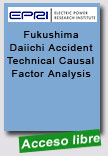 |
Fukushima Daiichi Accident – Technical Causal Factor Analysis
Electric Power Research Institute (EPRI), March 2012, 64 p.
On March 11, 2011, the Fukushima Daiichi nuclear power plant experienced a seismic event and subsequent tsunami. The accident and the ensuing mitigation and recovery activities occurred over several days, involved a number of incidents, and might provide several opportunities for lessons learned. The objective of this report is to determine the fundamental causative factors for the loss of critical systems at the Fukushima Daiichi
|
reactors that resulted in core damage and subsequent radioactive release. The analytical approach used structured event information to support the identification of causal factors; this information can be used in root cause analysis and corrective action determinations.
The technical analysis traced the cause for the eventual loss of all practical cooling paths for the reactors to the tsunami's flooding of the plant protection. Specifically, the analysis identified the significant difference between the design basis tsunami height and the actual tsunami height, as well as the limitations of beyond-design-basis tsunami protection or mitigation that could address the effects of the actual event. From a causal analysis perspective, these were caused by a methodology that specified that the rupture of combinations of geological fault segments in the vicinity of the plant need not be considered in establishing the design basis tsunami height. The tsunami that occurred was caused by a combined rupture of multiple fault segments.
Extraído de:
http://my.epri.com/portal/server.pt?Abstract_id=000000000001024946
|
 |
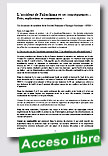 |
L’accident de Fukushima et ses conséquences - Faits, explications et commentaires
Société Française d’Energie Nucléaire (SFEN), 6 mars 2012, 23 p.
Ce document résume et analyse – en 12 « Questions/Réponses » - les données principales disponibles à ce jour sur l’accident de la centrale nucléaire japonaise de Fukushima-Daiichi, son déroulement, son impact environnemental et sanitaire, les actions entreprises pour la réhabilitation des zones contaminées et le retour des
|
populations évacuées. Il évoque aussi les initiatives engagées en France, pour évaluer la sûreté des installations nucléaires à la lumière des premiers enseignements tirés de l’accident. Des Annexes sur la radioactivité et les effets des rayonnements ionisants complètent ce document.
Extraído de:
http://www.sfen.org/L-accident-de-Fukushima-et-ses
|
 |
|
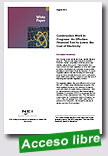
|
Construction Work in Progress: An Effective Financial Tool to Lower the Cost of Electricity
Nuclear Energy Institute (NEI), August 2011, 5 p.
This report discusses the infrastructure financing tool called "construction work in progress," or "CWIP," that supports new plant construction by allowing recovery of financing costs during construction and ultimately reducing the cost of electricity to consumers. |
|
|
|
|
|
|
